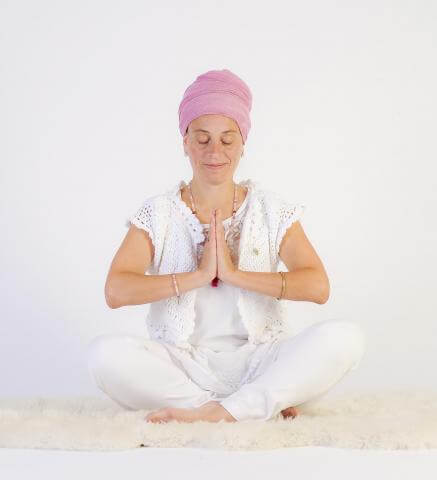The character of your thoughts and emotions is reflected in the motion and level of energy in your breath. One of the first habits of a yogi is to notice the state of the breath and prana. A disturbance in the subtle prana foreshadows what will manifest in the body and emotions.
If you learn what your normal state is, then you can notice deviations that are unhealthy as well as healthy enhancements. You can choose certain behaviors and meditations to redirect and shape that inner motion. This short-circuits the cycle of manifestation. You can avoid many illnesses and bad decisions.
It also opens your intuition to environmental changes. It increases your awareness of how other people influence you.
Meditation on the breath at the Navel Point is the starting point for awareness of prana. You may want to add the mantra Sat Nam to the flow of the breath.
Practice this meditation in silence and assess your energy state. Establish your zero point internally so you can notice the impact of the various breath combinations.
The Practice
Posture: Sit in an Easy Pose, with a light jalandhar bandh. Let your hands rest over the knees in Gyan Mudra or keep them in Prayer Pose at the center of the chest.
Eyes: Eyes are closed, pressed gently up, focusing at the Brow Point.
Mental Focus: Let your body feel in perfect balance. You can sit in this posture without effort. Let all of your attention gather on the breath. Sense the breath as a quality of motion. How
does it move in the different parts of your body as you breathe in a steady and meditative rhythm? What guna* and elements seem to dominate the quality of your breath as you begin the exercise? How does that change as you continue to meditate?
Bring your attention through the one-inch square area above the root of the nose where the eyebrows meet. Then focus the attention through the brow to the Navel Point area. Concentrate just below the interior of the umbilicus. Feel the motion and life energy of the breath.
Visualize the body as luminous. As you inhale, the light increases in brightness, extent, and penetration. Let that breath and light merge with the entire Cosmos. Let the breath breathe you. Experience yourself as a unit and the Cosmos as unlimited. Feel that you are a part of that vastness. The breath is a wave on a much greater ocean of energy of which you are a part.
Notice the motions and changes in the subtle breath, prana. Do not try to alter it. Observe it and learn to notice your baseline of prana. You are sensitizing your awareness to notice the state of energy and motion in your prana. You must calibrate to this baseline to notice and appreciate the effect of various pranayam meditation techniques.

Continue for 3 minutes up to 1 hour 2 minutes.
Comments:
*The three gunas are Tamas, Rajas, and Sattva. Tamas is a state of darkness, inertia, inactivity and materiality. To reduce tamas avoid tamasic foods, over sleeping, over eating, inactivity, passivity and fearful situations. Tamasic foods include heavy meats, and foods that are spoiled, chemically treated, processed or refined. Rajas is a state of energy, action, change and movement. To reduce rajas avoid rajasic foods, over exercising, over work, loud music, excessive thinking and consuming excessive material goods. Rajasic foods include fried foods, spicy foods, and stimulants. Sattva is a state of harmony, balance, joy and intelligence. To increase sattva reduce both rajas and tamas, eat sattvic foods and enjoy activities and environments that produce joy and positive thoughts. Sattvic foods include whole grains and legumes and fresh fruits and vegetables that grow above the ground. (source yogabasics.com)